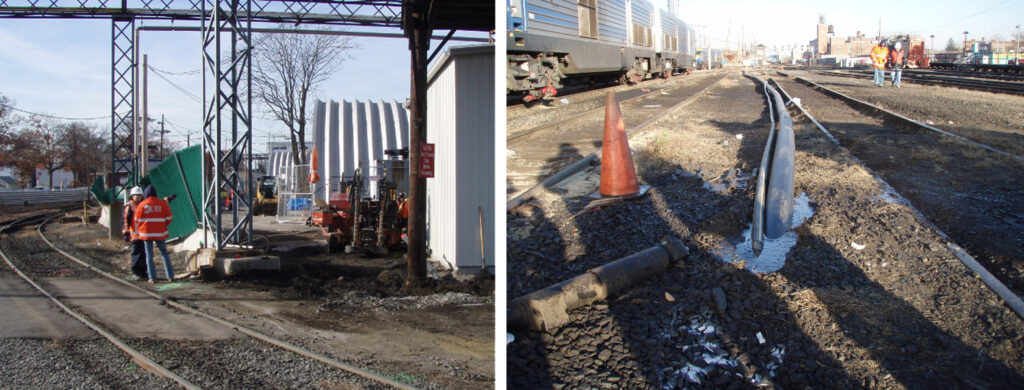A conceptual site model (CSM) is a comprehensive history of a particular contaminated site. Conceptual site models compile what types of businesses or residences existed on the property, the geologic conditions in the subsurface, and what activities have taken place to clean up the contamination.
For example, if soil contamination exists, soil vapor extraction (SVE) has likely been implemented to treat the vapors in the soil. In some cases, horizontal soil vapor extraction wells are used to treat contamination beneath buildings or parking lots. In other instances, horizontal wells supplement an existing vertical SVE system that is struggling to provide the necessary results. Conceptual site models are integral to understanding the past, present, and future needs of a contaminated site.
Reasons why you should Develop a CSM as noted in this Project Summary
A rail yard with a long history of operation in the metropolitan New York area was ordered by the USEPA to remove petroleum hydrocarbons from soils beneath multiple rail lines. The initial environmental consultant suggested temporarily altering the tracks so 88 vertical wells could be installed to remediate the contaminated area that was assessed to be more than 7000 feet. The suggested process and length of the project were discouraging, so the consultant met with Directional Technologies (DTI) and reviewed the conceptual site model.
After thoroughly reviewing the CSM with the client, DTI designed and installed 14 horizontal remediation wells, crossing as many as four railroad tracks while the railroad continued its normal, busy operations. Successfully installing the horizontal well injection system avoided hundreds of hours of downtime for the railroad and tens of thousands of yards of hazardous waste disposal.

Read other Project Summaries of Complex Soil Remediation Wells
It is an unfortunate consequence of the clustering of commercial businesses such as gas stations, automotive service shops, and dry cleaners at busy city intersections that groundwater contaminant plumes often migrate across >
A former gasoline station site with subsurface petroleum impacted soil and groundwater faced serious concerns of vapor intrusion to a building. The upcoming activation of an on-site air sparge remediation system was designed >
The former operations of an industrial facility contributed to a significant trichloroethylene (TCE) contaminate plume in groundwater extending over 1,300 feet east to west and 1,400 feet north to south >